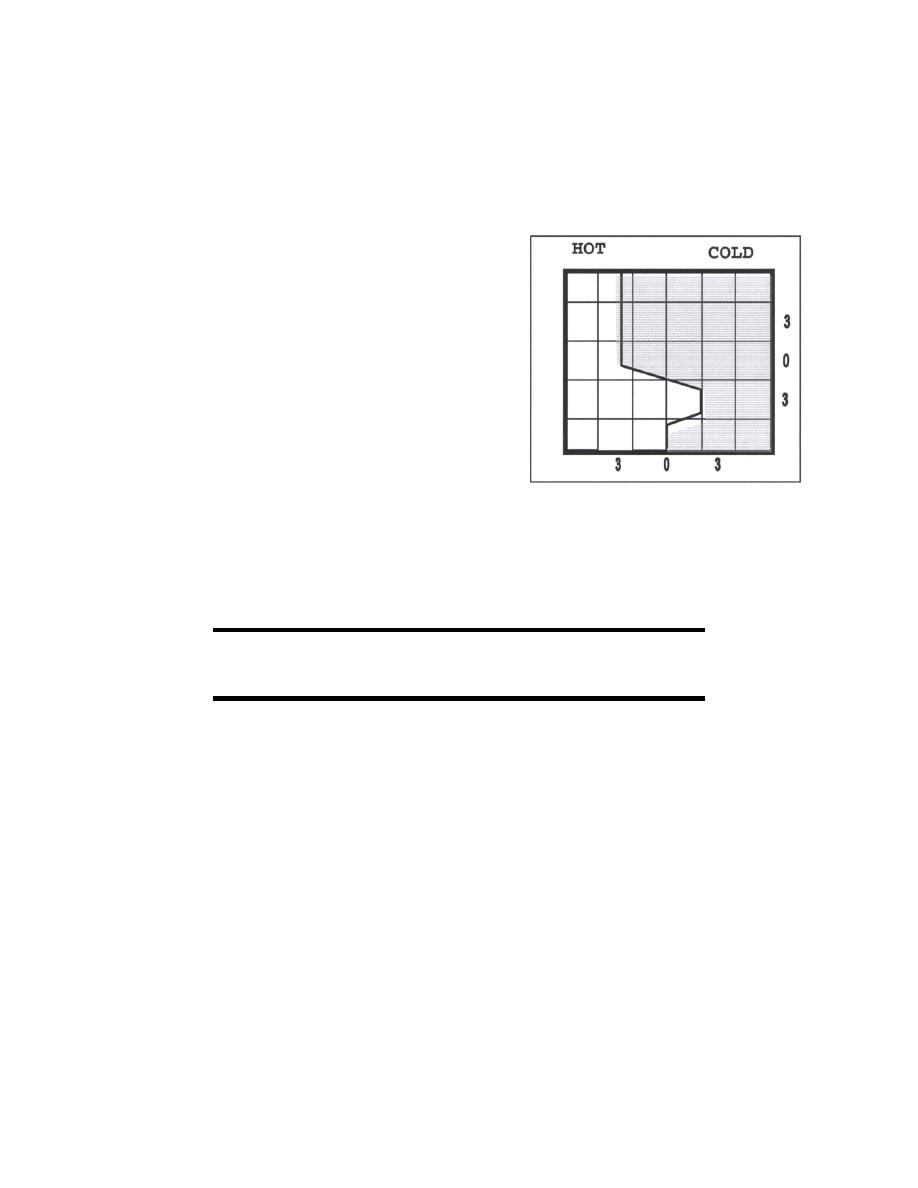 |
|||
|
|
|||
|
|
|||
| ||||||||||
|
|  INTERCEPT PROCEDURES TEXTBOOK
Hot and Cold
"Hot" refers to a low, or less than desirable, target aspect or lateral displacement situation at
a particular range. "Cold" refers to a high, or more than desirable, TA or LD situation at a
particular range. Although it may be initially hard to grasp this concept, using an ideal drift
pattern as a spatial orientation reference helps.
Situation:
Bogey is 30L AO with
30R TA and on CB until DT.
After DT, if bogey is
right of ideal drift
curve, bogey is "Cold".
If left of ideal drift
curve, bogey is "Hot".
Figure 11
The shaded portion of the scope is cold and the clear side is hot. At range (prior to DT), drift
into the clear side is "Hot Drift" of collision bearing with decreasing target aspect. Drift into the
shaded side is "Cold Drift," with the bogey inside collision with increasing target aspect.
Hot drift decreases Lateral Displacement...
Cold Drift increases Lateral Displacement...
...with respect to the ideal drift pattern
After displacement, even though the bogey is on the cold side of the scope, either hot or cold
drift may occur in relation to the ideal drift pattern. Drift to the shaded area is cold drift. The
fighter's nose is further behind the bogey and further off CB than the ideal. Drift into the clear
area is hot drift. The fighter's nose may still be behind the bogey but is closer to CB than the
ideal.
A "cold counterturn" is one in which the bogey is never brought back to the ideal drift path
after outward drift is observed. Figure 12 shows the bogey on the cold side of the scope
throughout the counterturn. Since the lateral displacement was not diminished quickly enough,
the fighter will end up in the rear quarter at a greater range than required for the Sidewinder
missile. At this stage the only recourse the weapons officer has is to add a buster to get within
Fox-2 range.
77
|
|
Privacy Statement - Press Release - Copyright Information. - Contact Us |